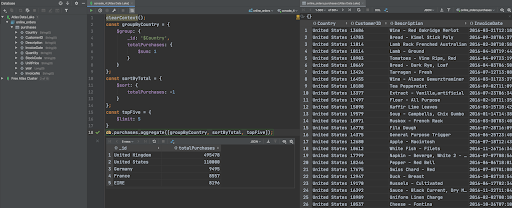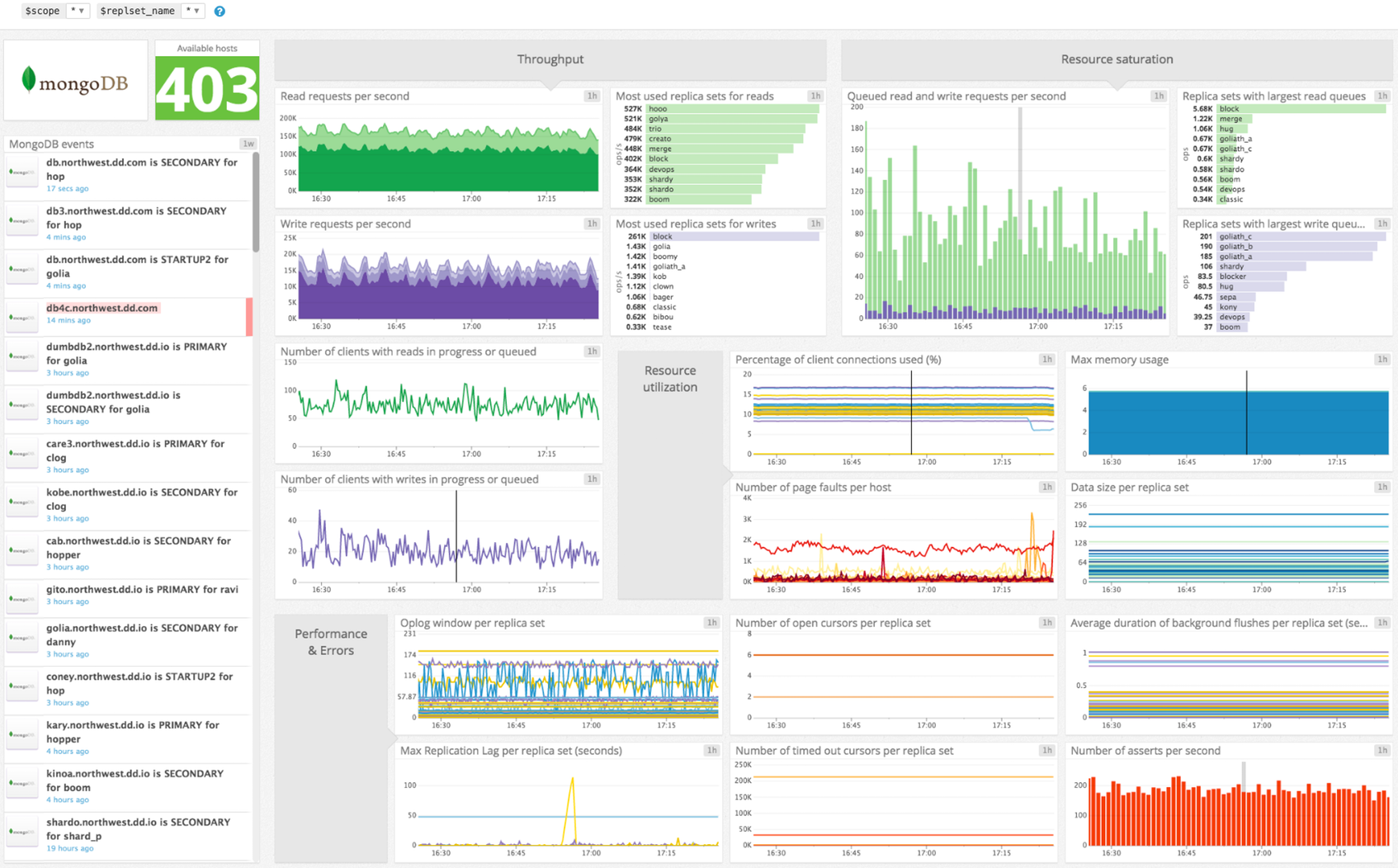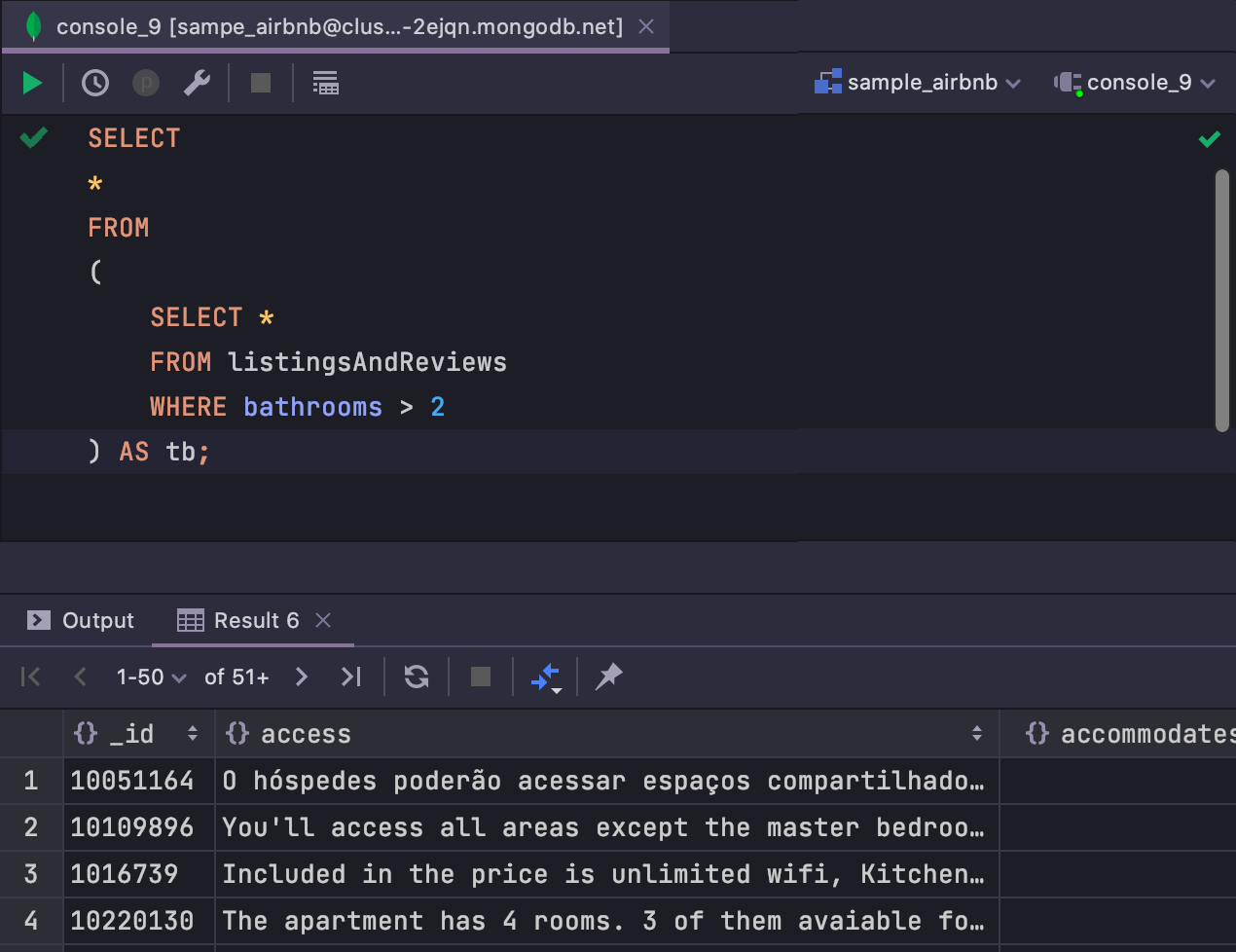

This new update adds support for the ones that were missing: Date, HexData, and MD5.īefore, only two bulkWrite options were supported: insertOne and deleteOne. You could previously create many types of BSON objects, but not all of them. New methods for working with collections: db.getCollectionInfos(), db.getCollectionNames(), and db.collection.remove(). More methods for cursors: explain, projection, close, isClosed, hasNext, next, isExhausted, itcount, map, tailable, toArray, readPref, and readConcern. Here’s the overview of what’s now available. The majority of the commands that you can run in the MongoDB shell are now available in DataGrip and other JetBrains IDEs, and they work in exactly the same way as they do in MongoDB.

To use the newest version of the driver, just update it in the properties window of your MongoDB data source. If you use DataGrip to work with MongoDB and Atlas, you get a console/shell experience that is 100% consistent with what you get in MongoDB’s own shell and other MongoDB developer tools. This is the result of a close collaboration between engineering teams at MongoDB and JetBrains, and we are excited to finally release it to all our users.
DATAGRIP MONGODB CREATE DATABASE DOWNLOAD
If you sign in using your Google account, you can download random data programmatically by saving your schemas and using curl to download data in a shell script via a RESTful url.Hi! We’ve released the new version of the MongoDB JDBC driver, which means that DataGrip now includes support for the new MongoDB Shell out of the box. Mockaroo allows you to quickly and easily to download large amounts of randomly generated test data based on your own specs which you can then load directly into your test environment using SQL or CSV formats. But not everyone is a programmer or has time to learn a new framework.

There are plenty of great data mocking libraries available for almost every language and platform. Testing with realistic data will make your app more robust because you'll catch errors that are likely to occur in production before release day.

Real data is varied and will contain characters that may not play nice with your code, such as apostrophes, or unicode characters from other languages. When you demonstrate new features to others, they'll understand them faster. When your test database is filled with realistic looking data, you'll be more engaged as a tester. Worse, the data you enter will be biased towards your own usage patterns and won't match real-world usage, leaving important bugs undiscovered. If you're hand-entering data into a test environment one record at a time using the UI, you're never going to build up the volume and variety of data that your app will accumulate in a few days in production. In production, you'll have an army of users banging away at your app and filling your database with data, which puts stress on your code. If you're developing an application, you'll want to make sure you're testing it under conditions that closely simulate a production environment. Paralellize UI and API development and start delivering better applications faster today! Why is test data important? With Mockaroo, you can design your own mock APIs, You control the URLs, responses, and error conditions. By making real requests, you'll uncover problems with application flow, timing, and API design early, improving the quality of both the user experience and API. It's hard to put together a meaningful UI prototype without making real requests to an API. Mock your back-end API and start coding your UI today.


 0 kommentar(er)
0 kommentar(er)
